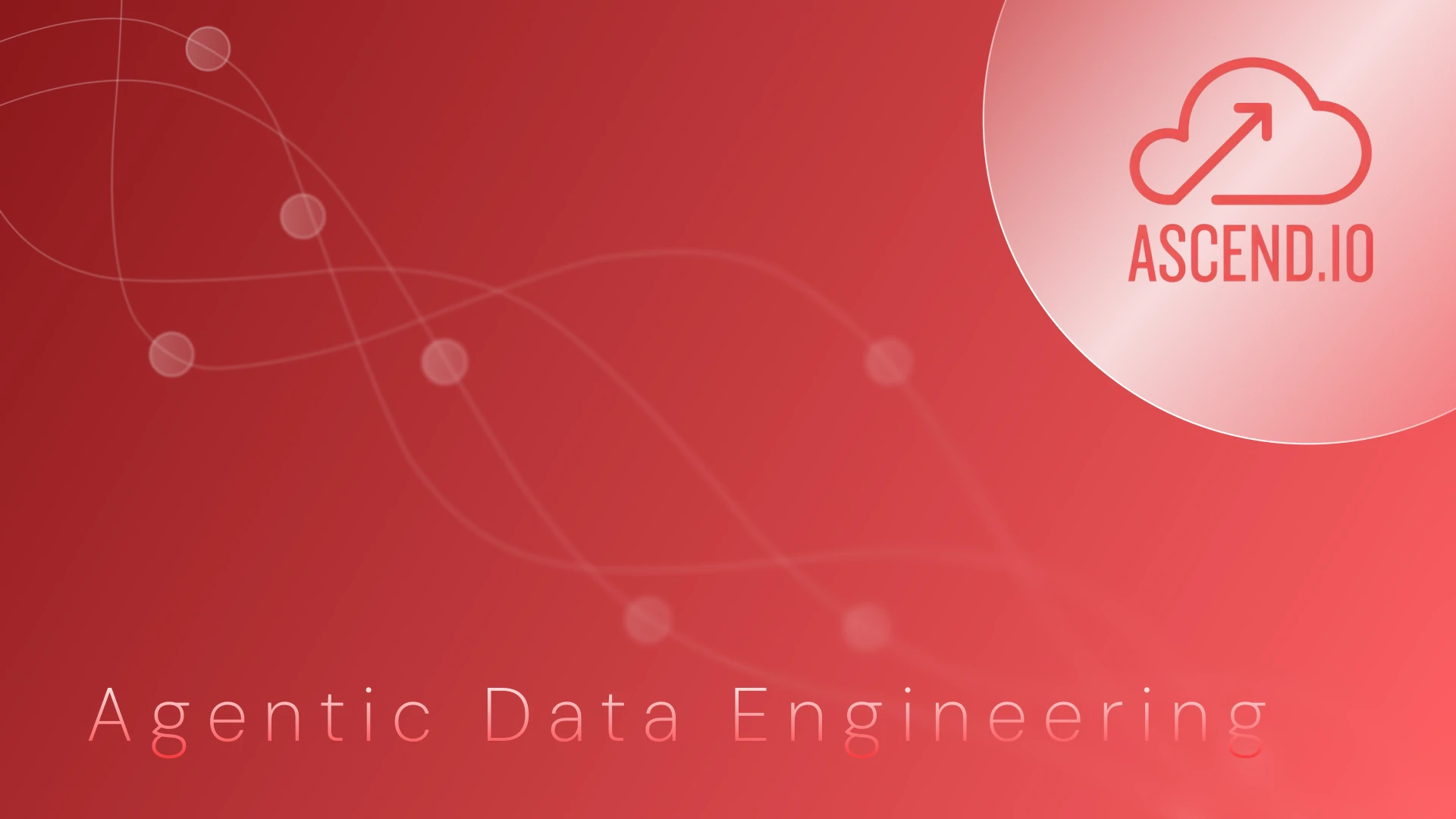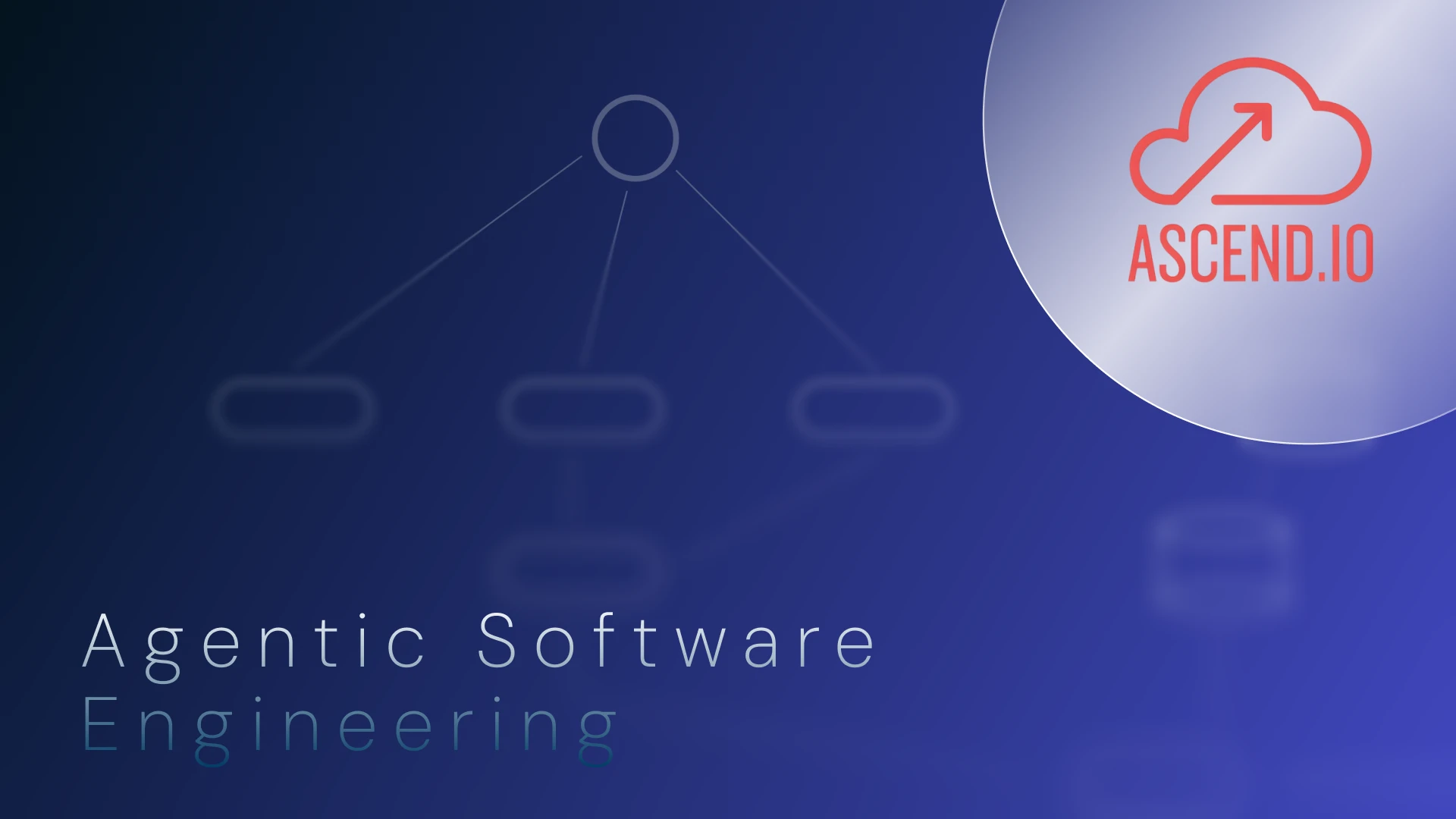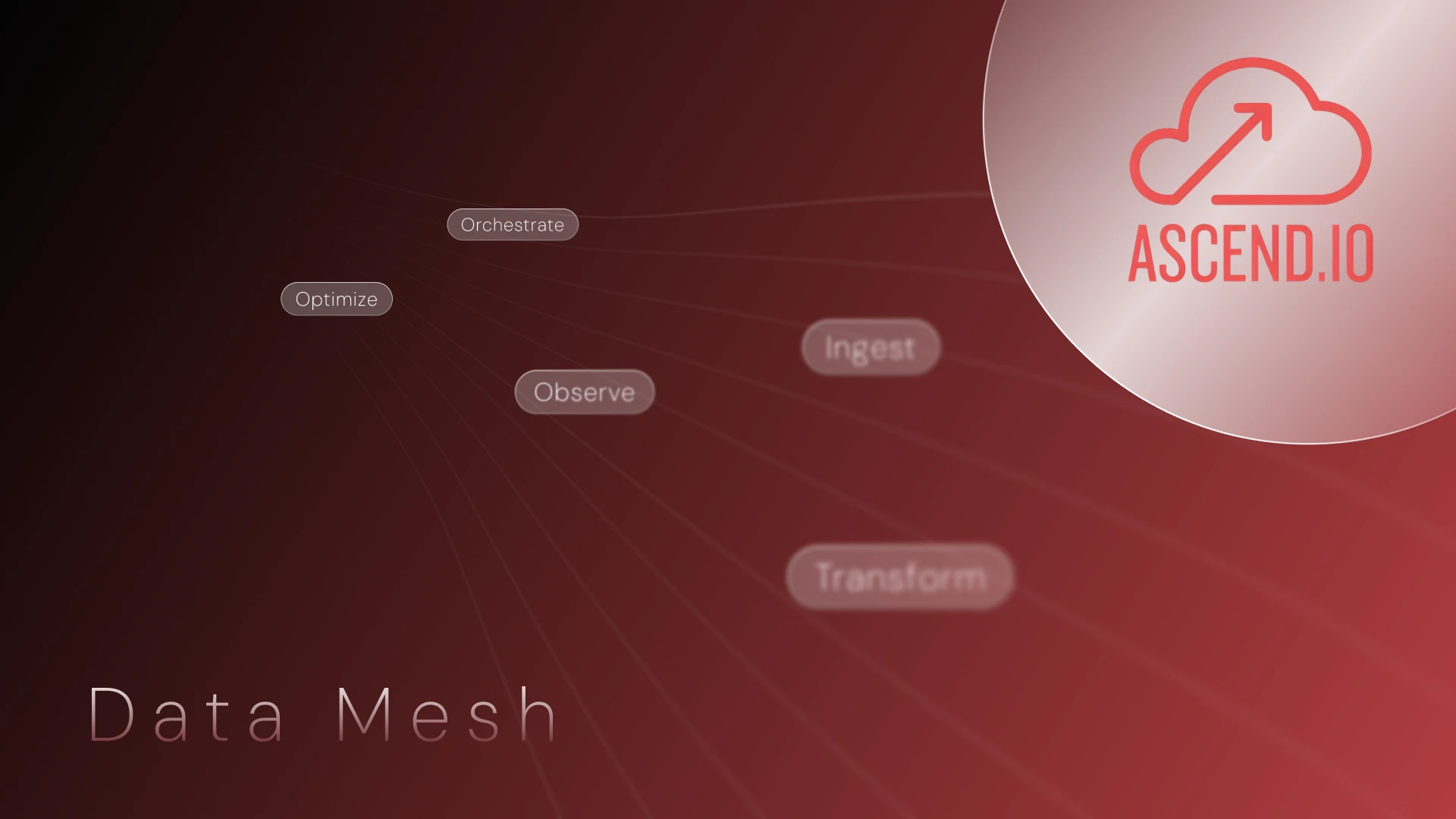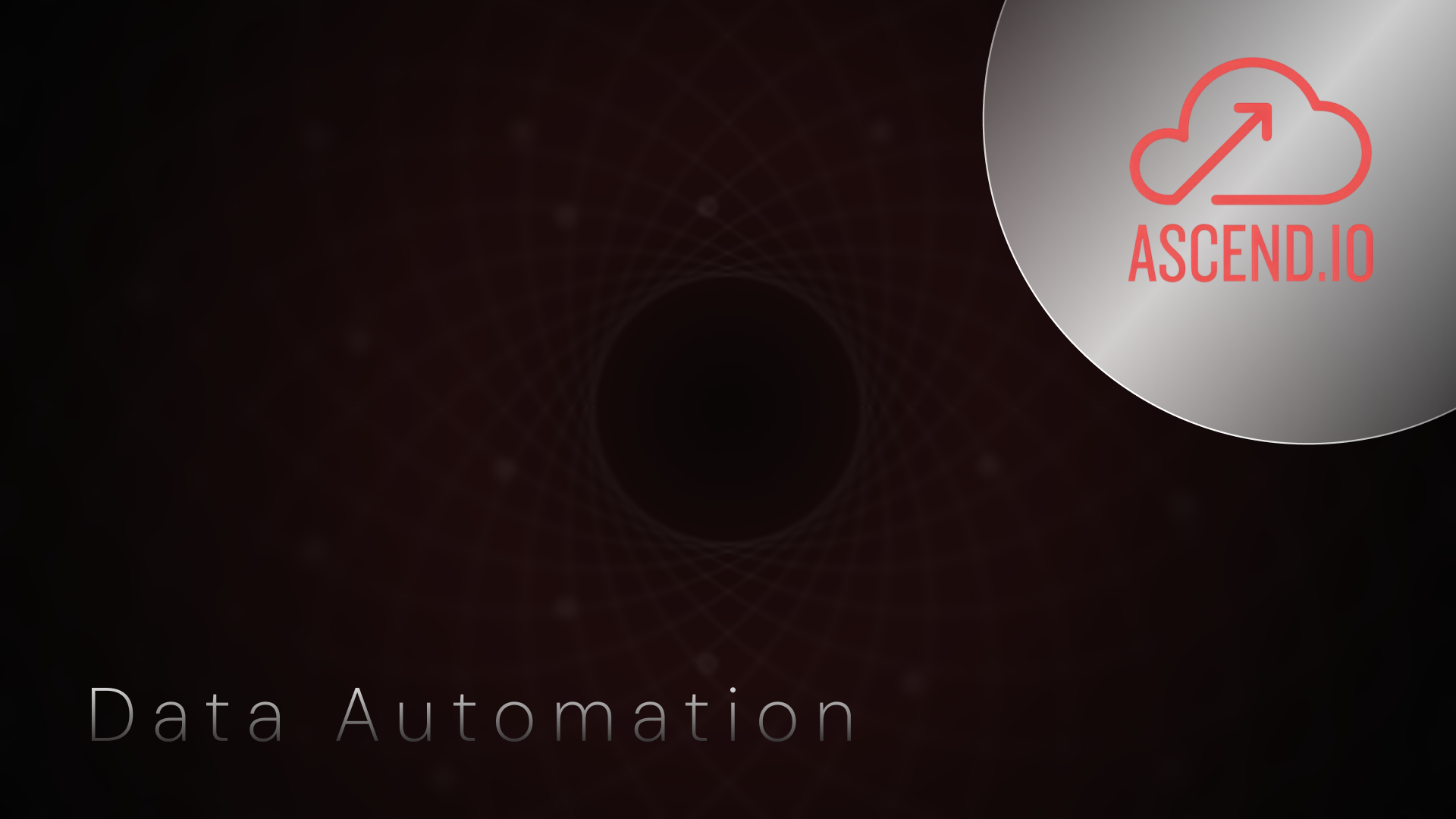A few months ago, I was debugging a production issue at 2 AM when one of our customers' pipelines broke because a vendor API added a single optional field to their JSON response. The pipeline had been running flawlessly for months, but that one schema change cascaded through their entire data ecosystem—breaking dashboards, ML models, and triggering downstream failures. Sound familiar?
That sinking feeling when you realize a minor schema change is about to become a major operational headache. The emergency Slack messages. The hurried explanations to stakeholders about why their reports are suddenly empty. The weekend spent migrating terabytes of data just to accommodate one new field.
But what if schema evolution didn't have to be painful? What if your data platform could automatically handle schema changes without breaking downstream systems or requiring expensive reprocessing? That's exactly what our team at Ascend has been working to deliver with Smart Schema Management—a fundamentally different approach that eliminates the traditional pain points of schema evolution.
In this post, I'll walk you through why traditional schema management is so expensive and risky, how we architected Smart Schema Management to solve these problems, and what this means for the future of data pipeline reliability.
The Billion Dollar Schema Management Crisis
Let me put this problem in perspective. Schema evolution isn't just an operational nuisance—it's one of the most expensive problems in enterprise data infrastructure. According to Splunk's research, downtime costs Global 2000 companies $400 billion annually, with schema-related failures contributing significantly to these losses.
The numbers get even more sobering when you drill down. ITIC's 2024 report shows that 41% of enterprises experience hourly downtime costs between $1 million and $5 million, with 90% of companies facing losses exceeding $300,000 per hour during pipeline outages. When you consider that poor schema management contributes an average of $12.9 million in annual costs per organization through data quality issues alone, this becomes a board-level concern.
Many of us at Ascend have lived through these scenarios in previous roles. We’ve seen how a single schema change can require a multi-day migration window. The business impacts in these cases are immediate—dashboards go dark, ML models stop training, and the data science team is essentially blocked until the issues are resolved. The direct operational cost is enormous, but the opportunity cost of delayed insights and broken automation are even worse.
The Classic Approaches and Their Painful Trade-offs
Every data engineering team I've worked with has tried the same approaches to schema management, and every team has discovered the same fundamental problem: they all force impossible trade-offs.
Schema Migration: The "nuclear option" where you alter your entire dataset to match a new schema. This works for small datasets but becomes exponentially expensive and risky as data grows. I've seen migrations take weeks for petabyte-scale datasets, requiring massive compute resources and creating single points of failure that can bring down entire data platforms.
Append-Only: The conservative approach where you only allow additive changes. This seems safe until business requirements demand you remove deprecated fields or change data types. Then you're stuck with growing technical debt—tables with dozens of unused columns and increasingly complex downstream logic to handle legacy fields.
Last-One-Wins: The "move fast and break things" approach where the most recent schema becomes the source of truth for everything. This works until someone accidentally introduces a corrupted file with a malformed schema, and suddenly your entire pipeline is treating order amounts as strings instead of numbers.
Most-Restrictive-First: The approach where you evolve from strict to relaxed types over time. This requires perfect coordination between all data producers and consumers—something that's virtually impossible in distributed systems where teams deploy independently.
Each approach involves trade-offs that shouldn't exist in 2025. You're forced to choose between data consistency, operational efficiency, and development velocity. Traditional systems treat minor schema changes like existential threats, when most of the time they're completely benign additions or safe type widenings.
The fundamental problem is that these approaches all assume you need to modify your data when your schema changes. But what if you didn't?
Ascend's Smart Schema Management: A Fundamentally Different Approach
When we set out to solve schema management at Ascend, we started with a simple question: what if we stopped trying to force all our data into a single, rigid schema? What if we embraced the natural evolution of data formats instead of fighting it?
This led us to a fundamentally different philosophy that eliminates the trade-offs that plague traditional approaches.
Core Philosophy: Store Native, Resolve at Read
Smart Schema is built on one core principle: store each data source in its original, native schema, and resolve differences at read time.
Here's how it works:
- Write-time: Every data source is stored exactly as it arrives, preserving its original schema without modification. After all the data has been written, we persist the data query that produces the unified schema as a view.
- Read-time: We dynamically create the "most generous union" of all schemas encountered across your dataset by evaluating that view
- No data migration: The underlying data files never change, eliminating migration risks, costs, and downtime
- Metadata-driven: Schema resolution happens entirely in the query layer through fast metadata operations
Think of it like version control for schemas. Git doesn't rewrite your entire repository history when you merge branches—it creates a new commit that represents the combined state. Similarly, Smart Schema creates a unified, queryable view without ever touching the underlying data files.
How It Actually Works
Let me show you this with a concrete example that mirrors what we see in production all the time. Imagine you have an e-commerce dataset that evolves over several months:
With traditional approaches, you'd face an impossible choice:
- Migrate everything → Expensive, risky, requires downtime
- Reject new data → Blocks business requirements
- Allow inconsistency → Breaks downstream consumers
Smart Schema says "why choose?" Each file remains in its original format—the January data stays as integers, the March data keeps its discount field, the June data remains unchanged. But when you query the dataset, you get a unified view with amount as float (the most generous numeric type) and discount as an optional string field.
Type Resolution Logic
Our type resolution follows safe, predictable rules that preserve data integrity:
Safe Type Widening: int + float → float
Numbers can always be safely promoted to more generous numeric types. Your January integer amounts become floats when queried, but no precision is lost.
Data Preservation: int + string → string
When we encounter truly incompatible types, we choose preservation over strictness. If one file has order IDs as integers and another has them as strings, we'll treat them all as strings.
Graceful Missing Fields: missing column → null
Fields that don't exist in older data simply appear as null values. Your January data doesn't have a discount field, so it shows up as null when you query the unified schema.
Self-Healing: bad file removal → automatic schema correction
Here's the really powerful part: if a corrupted file is causing unwanted schema changes, you can simply delete it and the schema automatically evolves back to the correct state. No complex rollback procedures or data migrations required.
The beauty of this approach is that it eliminates the fundamental tension in schema management. You get consistency without sacrificing flexibility, and reliability without operational overhead. Schema evolution becomes a non-event—something that happens transparently in the background while your pipelines keep running.
The Architectural Parallel: Learning from Modern Table Formats
Smart Schema Management isn't operating in a vacuum—it's part of a broader evolution in data architecture toward metadata-driven systems that we're seeing across the industry. When I explain our approach to other engineers, they often say "this sounds like what Iceberg and Delta Lake do for table management." They're absolutely right, and that's intentional.
Similarities to Iceberg and Delta Lake
Our approach shares fundamental principles with modern table formats that have revolutionized analytical data management:
Metadata-Driven Evolution: Just like Apache Iceberg records schema changes in metadata rather than rewriting data files, Smart Schema tracks schema evolution through metadata operations. When Iceberg adds a column, it doesn't touch existing Parquet files—it just updates the metadata to reflect the new schema. We do the same thing, but across multiple data sources and formats.
ACID Compliance Without Rewrites: Modern table formats provide transaction guarantees without costly data rewrites. Similarly, Smart Schema Management maintains perfect consistency across schema versions without ever modifying the underlying data files.
The success of these approaches validates our core insight: the future of data management is about smart metadata operations, not expensive data operations.
Ascend's Unique Distributed Advantage
Where Smart Schema differs is in its distributed-first design optimized for real-time data pipelines:
Zero Coordination Required: Unlike traditional schema management that requires careful coordination between producers and consumers, Smart Schema works in completely distributed environments. Each processor writes data in whatever schema it knows to be correct, and we figure out the unified view automatically. This is crucial when you have multiple systems writing to the same dataset independently.
Cross-Format Compatibility: While table formats like Iceberg work brilliantly for analytical workloads, they're typically tied to specific storage formats. Smart Schema Management works across Parquet, Avro, JSON, CSV, and any other structured format supported by the Ascend platform. This means you can have a unified schema view across data coming from APIs, databases, files, and streams.
Automatic Conflict Resolution: When multiple processes encounter different schemas simultaneously, traditional systems either fail or require complex locking mechanisms. Smart Schema Management handles these conflicts automatically through intelligent merging algorithms. We've tested this with hundreds of concurrent writers introducing schema changes, and the system gracefully handles every scenario.
This distributed-first approach solves problems that even modern table formats struggle with. When Netflix processes 500 billion data events daily, they need systems that can handle schema evolution at massive scale across diverse data sources. Smart Schema is designed for exactly these scenarios—where data is streaming in from dozens of sources, schemas are evolving constantly, and downtime simply isn't an option.
The architecture represents the next evolution in data platform design: beyond just managing tables, we're managing entire data ecosystems where schema evolution happens continuously and transparently.
When Smart Schema Management Shines
After working to build our Smart Schema Management features, I've learned exactly where it provides the most value and what teams should consider as they embrace this strategy.
Perfect Use Cases
Long-lived datasets with evolving requirements: If your data needs to live for months or years, schema evolution is inevitable. APIs change, business requirements evolve, and data sources get updated. I've worked with datasets spanning multiple years with dozens of schema variations, all queryable as a single, consistent table. Traditional approaches would have required constant migrations or resulted in a fragmented mess of incompatible data.
High-volume pipelines where migration costs are prohibitive: When you're processing terabytes daily, migration downtime isn't just expensive—it can be business-critical. One customer processes 50TB of transaction data daily across hundreds of files. With traditional schema management, a single type change would require days of migration work and significant compute costs. Smart Schema makes these changes completely transparent.
Distributed processing environments requiring zero coordination: This is where Smart Schema really shines. When you have multiple systems writing to the same dataset—think microservices, edge processors, or partner APIs—coordinating schema changes becomes a nightmare. Smart Schema eliminates this coordination overhead entirely. Each system writes what it knows to be correct, and we handle the rest automatically.
Multiple data sources with slightly different schemas: Real-world data rarely fits into perfect boxes. You might have the same logical data coming from different vendors, API versions, or internal systems with slight variations. Traditional approaches force you to either normalize everything upfront (expensive) or manage multiple separate datasets (fragmented). Smart Schema lets you treat them as one unified dataset while preserving the nuances of each source.
Trade-offs and Mitigation Strategies
I'd be lying if I said Smart Schema was magic with no trade-offs. Here's what you need to know:
Read-time processing overhead: Schema resolution happens during queries, which adds some computational overhead. In practice, this is usually minimal—we're talking milliseconds for metadata operations versus hours or days for traditional migrations. The trade-off is overwhelmingly in favor of read-time processing, especially when you consider that most schema changes affect a small percentage of your overall data.
Governance requirements: With great flexibility comes great responsibility. Smart Schema makes schema evolution so seamless that you need good governance practices to prevent chaos. This means automated testing in CI/CD pipelines, clear data contracts with upstream producers, and monitoring for drift. The good news is that since schema changes are non-destructive, you can always roll back by removing problematic data files.
The reality is that these trade-offs are far more manageable than the traditional alternatives. Read-time overhead is predictable and minimal. Monitoring requirements are straightforward. Governance becomes about preventing bad data rather than managing complex migrations.
Implementation Best Practices from the Field
While Smart Schema eliminates many traditional schema management headaches, there are still best practices that will make your implementation more successful. These come directly from our experience building the system and working with early customers who've been running it in production.
Monitor Schema Evolution
Keep an eye on how your schemas are evolving over time. Smart Schema provides visibility into every schema change, and you should use this information proactively. If you're seeing unexpected type combinations—like numbers suddenly becoming strings—investigate the source rather than just accepting it.
One pattern I've seen work well is setting up automated alerts for "surprising" schema changes—type narrowing, field deletions, or dramatic increases in null rates. These often indicate upstream issues that are worth investigating early.
Clean Up Problematic Files
If a file with bad data is causing unwanted schema changes, the solution is elegantly simple: delete it and let the schema evolve back naturally. This is one of Smart Schema's biggest operational advantages—recovery is as straightforward as removing the problematic data.
I've seen this pattern repeatedly: a corrupted file gets ingested, causing a field to change from numeric to string. With traditional systems, you'd need a complex rollback procedure or data migration. With Smart Schema, you just remove the bad file and rerun the ingestion component; then, the next time someone queries the dataset, the schema automatically reflects the correct state from the remaining data.
We recommend implementing file-level monitoring and automated cleanup policies for obviously corrupted data. This creates a self-healing data pipeline that maintains quality without manual intervention.
Consider Read Performance
While read-time transformations are generally efficient, extremely complex schema reconciliation might impact query performance. Monitor your query latency and optimize as needed.
In practice, we've found that read-time overhead is minimal for most workloads—usually adding single-digit milliseconds to queries. The metadata operations are very fast, and the actual data transformations (like widening integers to floats) are computationally cheap. However, if you have datasets with hundreds of schema variations or very complex type hierarchies, you might want to periodically consolidate schemas through background processes.
The key insight is that this overhead is predictable and controllable, unlike the unpredictable downtime and resource consumption of traditional migrations.
Plan for Long-Lived Datasets
Smart Schema provides the most value for datasets that evolve over months or years. The longer your data lives, the more schema evolution you'll naturally encounter, and the more operational overhead Smart Schema eliminates.
I've worked with datasets spanning multiple years with dozens of schema variations, all queryable as a single, consistent table. These are exactly the scenarios where traditional schema management breaks down and Smart Schema shines. If you're building data infrastructure that needs to operate for years, Smart Schema should be a core architectural decision, not an afterthought.
The investment in proper schema governance and monitoring pays exponential dividends over time. What starts as a small convenience becomes a massive operational advantage as your data ecosystem grows and evolves.
Conclusion: Schema Management as Strategic Differentiator
When I think back to that 2 AM debugging session I mentioned at the start, what strikes me most is how unnecessary it was. A single optional field addition shouldn't cascade through an entire data ecosystem, causing downstream failures and emergency response procedures. Yet with traditional schema management approaches, these scenarios are inevitable.
After architecting and implementing Smart Schema, I can confidently say we've solved one of data engineering's most persistent and expensive problems. Schema changes that would have required days of planning, migration work, and careful coordination now happen transparently. The operational overhead that every data team accepts as "just part of the job" simply disappears.
The key insight that drove our design is deceptively simple: store native, resolve at read time. By refusing to modify data when schemas change, we eliminate the fundamental source of complexity, risk, and expense in traditional approaches. No migrations, no downtime, no impossible trade-offs between consistency and agility.
.webp)




.webp)

.webp)



.webp)





